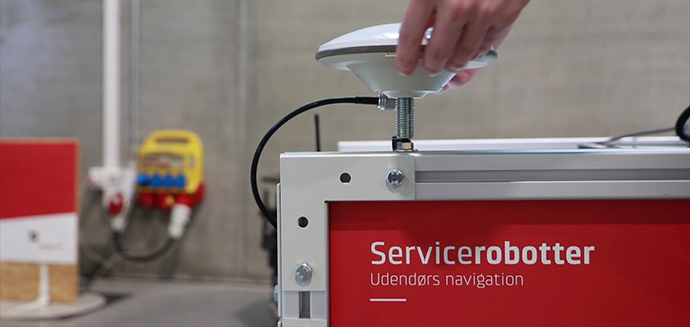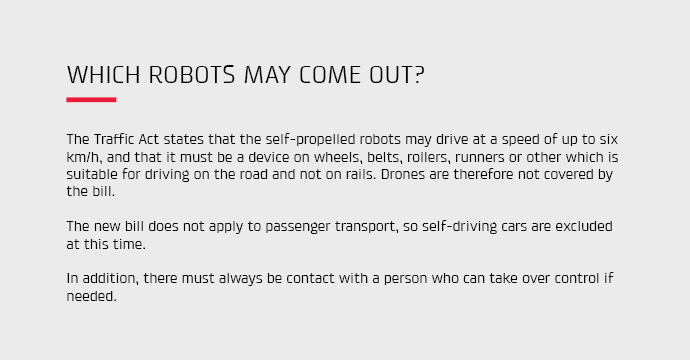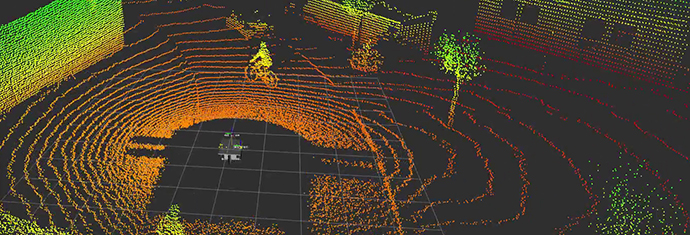The Danish Traffic Act has changed: Now robots can be found on the streets
On January 1, 2021, the Traffic Act changed, and it became possible to experiment with "self-driving devices" in the public space. An Odense Robotics project has taken a closer look at how this change impacts the future of mobile robots.
Small self-propelled robots that pick-up cigarette butts from the ground or deliver food right to your door could become a reality within a few years.
A new bill in Denmark has found its way into traffic law. This bill makes it possible to test small, autonomous vehicles on Danish streets and alleyways -- robots which will make "last mile delivery”, i.e., delivery right to the door, possible in the near future -- and it will open up more use scenarios for the robots.
The Danish Technological Institute (DTI) in partnership with Aalborg University, CONPLEKS, Capra Robotics and Desupervised have investigated what the future of outdoor, self-propelled robots could look like, under the auspices of an Odense Robotics project called Inter-Urban Vehicles.
- The purpose of the project has been to explore this new generation of mobile robots, which will work in public, and to investigate the new bill, says Kasper Camillus Jeppesen, who is a specialist at DTI, and adds:
- The bill makes it possible for these robots to come out into the real world. That is, where there is other traffic and where the traffic law applies.
Until now, it has not been possible to implement or make major experiments with inter-urban vehicles, which are a mix between traditional mobile robots and self-driving cars. The vehicles are subject to the Traffic Act, as they operate in the public space, and this has not opened up for the use of the vehicles - until now.

Moves things from A to B
The new bill is interesting both for the business community and for the research community.
- The new pilot scheme provides a whole lot of new opportunities for pursuing projects within the city, for example logistics and transport, but it also offers some completely new opportunities within caring for nature, lawn mowing and sports applications within urban development, says Dennis Snitgaard, who works with sales and company development in the Struer company CONPLEKS which, among other things, develops complete software solutions for advanced robots.
Mads Bendt, Chief Technology Officer at Capra Robotics, has no doubt that in the future the robots will work while we humans are their "team leaders".
- These robots will help many who are currently doing tasks that are more appropriate for robots. For example, something like picking up litter, or removing chewing gum or weeds from pavements, says Mads Bendt.
- Maybe some things should be moved from A to B. It does not make much sense in my world that a burger should be moved from city to city in a car, he adds.

Kasper Camillus Jeppesen from the Danish Technological Institute supports this:
- The biggest domain when it comes to mobile robots is probably logistics - i.e. "last mile delivery", which gets goods all the way to the specific customer. Whether it is fast food, packages, or something else, it is about getting things brought from A to B, where large trucks take the things to the local depot and small mobile robots that run on the sidewalks or on the bike paths take your things from the depot to your door.
A good "first step"
But even though mobile robots may now drive in the open, there is still some way to go before they are seriously ready for the responsibility required to transport themselves autonomously among humans.
- Before these robots become widespread, they must become better at interacting with humans. We need to find some way that the robots can make their intentions understandable to the people that they encounter. Interaction between humans and robots becomes very important, and so does safety and security. It is clear that relatively large machines driving really autonomously require some safety measures, which are actually not yet fully developed and ready for rollout, says CEO of CONPLEKS, Tom Simonsen.

According to Kasper Camillus Jeppesen, considerable work is needed before the robots can move around freely and deliver goods to the Danes.
- There are three primary areas of investigation for these mobile robots with the new permissions: the technology behind sensors and figuring out where the robot is and how it should run; the mobility of the platform - is it running or walking robots, and what domain does it fit into; and finally, of course, we also have the safety aspect. The robots must be safe among the public, and they must of course comply with this new legislation, says Kasper Camillus Jeppesen.
- But we have no doubt that this as a first and good beginning towards more pilot rollouts and projects with outdoor mobile robots, Dennis Snitgaard states.
The project was carried out under the auspices of RoboCluster, which has now become part of Odense Robotics. The project is supported by the Ministry of Higher Education and Science and the Region of Southern Denmark.